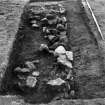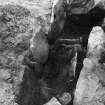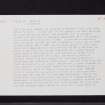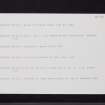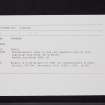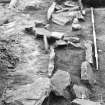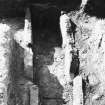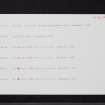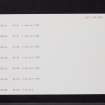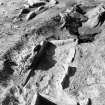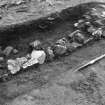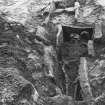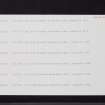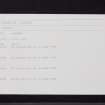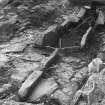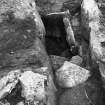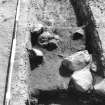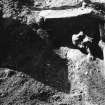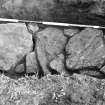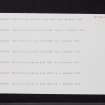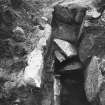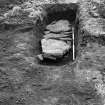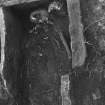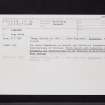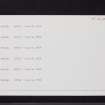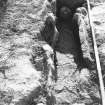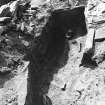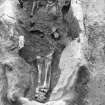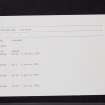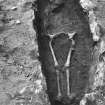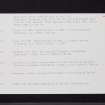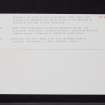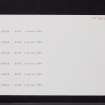Parkburn
Long Cist Cemetery(S) (Early Medieval)
Site Name Parkburn
Classification Long Cist Cemetery(S) (Early Medieval)
Canmore ID 51697
Site Number NT26NE 28
NGR NT 2998 6744
NGR Description NT 2998 6744 to NT 2986 6733
Datum OSGB36 - NGR
Permalink http://canmore.org.uk/site/51697
- Council Midlothian
- Parish Lasswade
- Former Region Lothian
- Former District Midlothian
- Former County Midlothian
NT26NE 28 2998 6744 to 2986 6733
See also NT26NE 27 and NT26NE 31.
Dressed masonry found in long cist apparently derived from Elginhaugh bath-house (NT36NW 83).
G S Maxwell and D R Wilson 1987
Excavation (1954 - 1956)
Excavations at the Parkburn gravel pit, between 1954 and 1956, uncovered 111 cists.
Note (1988)
Parkburn NT 2986 6733 to 2998 6744 NT26NE 28
This long cist cemetery is situated on England's Hill, some 600m ENE of Parkburn. A large part of the cemetery has been destroyed by a sand and gravel quarry (now disused), but it probably extends into the strip of woodland immediately NW of the quarry, where cists were discovered in 1885. Excavation in advance of sand extraction in 1954 and 1956 revealed 111 cists, all of them aligned roughly from ENE to WSW. Two principal groups of cists were identified, separated by a wall running from NE to SW along the crest of the hill: the S group comprised forty widely-spaced cists, most of them well-built with substantial slabs; the N group, which comprised fifty cists, the majority built of slighter stones, was more compact and there was evidence of disturbance and successive construction. The only finds from the cists were part of a jet armlet (RMS, FN 189), a small fragment of iron, possibly a knife blade (RMS, 1A 49) and fragments of six rotary querns, three of them in re-use as cist slabs (RMS, BB 115- 20). Since the excavations a further six long cists and a Bronze Age cist (see NT26NE 27) have been discovered. One of the cists, which was found in 1962, was built of dressed stones of Roman date, including three arch voussoirs, probably removed from the bath-house of the Flavian fort at Elginhaugh (NT36NW 61 & 83); the cist was aligned roughly NE-SW and there was a small sherd of Neolithic pottery (RMS, EO 983) in its fill.
RCAHMS 1988
(Name Book, Edinburgh, No. 20, p. 44; No. 32, p. 44; RCAHMS 1929, 117, no. 152; Henshall 1956; Henshall 1966a; Frere 1985, 264-5)












































